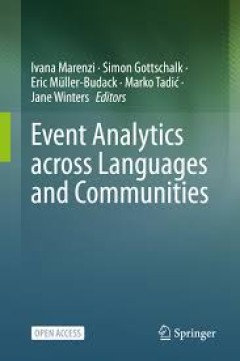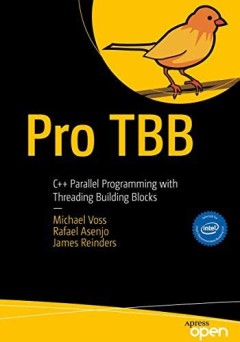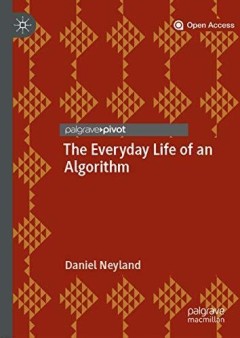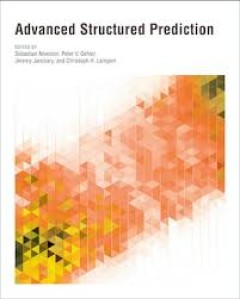Filter by

Event Analytics across Languages and Communities
This open access book presents interdisciplinary and cross-sectoral research results fostering event analytics across languages and communities. It is based on the CLEOPATRA International Training Network, which explored how we analyze and understand the major events that influence and shape our lives and societies, and how they unfold online. This analysis was achieved through various case stu…
- Edition
- 1
- ISBN/ISSN
- 978-3-031-64451-1
- Collation
- XVI, 257
- Series Title
- -
- Call Number
- -

Pro TBB = C++ Parallel Programming with Threading Building Blocks
This open access book is a modern guide for all C++ programmers to learn Threading Building Blocks (TBB). Written by TBB and parallel programming experts, this book reflects their collective decades of experience in developing and teaching parallel programming with TBB, offering their insights in an approachable manner. Throughout the book the authors present numerous examples and best practice…
- Edition
- 1
- ISBN/ISSN
- 9781484243985
- Collation
- LXVI, 754 hlm; ill., lamp.,
- Series Title
- -
- Call Number
- -

An Introduction to Cognitive Economics = The Science of Mistakes
This book introduces readers to “cognitive economics,” a rapidly emerging interdisciplinary science built on economic, psychological, and data scientific foundations. Throughout the book, economist Andrew Caplin provides new approaches to help scholars collaborate and solve problems that can shape economic outcomes and bridge the gap between theoretical knowledge and the real world. Divide…
- Edition
- 1
- ISBN/ISSN
- 9783031730429
- Collation
- XI, 158 hlm; ill., lamp.,
- Series Title
- -
- Call Number
- -

Cloud-Based Remote Sensing with Google Earth Engine
This book guides its audience—which can range from novice users to experts— though a 55-chapter tour of Google Earth Engine. A sequenced and diverse set of lab materials, this is the product of more than a year of effort from more than a hundred individuals, collecting new exercises from professors, undergraduates, master’s students, PhD students, postdocs, and independent consultants. …
- Edition
- 1
- ISBN/ISSN
- 978-3-031-26588-4
- Collation
- XXI, 1226
- Series Title
- -
- Call Number
- -

Industrielle Datenanalyse : Entwicklung einer Datenanalyse-Plattform für die…
Dieses Open Buch schlägt eine Brücke zwischen Theorie und Praxis für das produzierende Gewerbe im Zeitalter der Digitalisierung, der Industrie 4.0 und der Künstlichen Intelligenz. Es ist das Resultat eines vierjährigen Forschungsprojekts, das unter der Leitung des Instituts für Produktionssysteme der Technischen Universität Dortmund und der RapidMiner GmbH in Zusammenarbeit mit zwölf we…
- Edition
- -
- ISBN/ISSN
- 978-3-658-42779-5
- Collation
- XV, 215
- Series Title
- -
- Call Number
- -

The Everyday Life of an Algorithm
This open access book begins with an algorithm–a set of IF…THEN rules used in the development of a new, ethical, video surveillance architecture for transport hubs. Readers are invited to follow the algorithm over three years, charting its everyday life. Questions of ethics, transparency, accountability and market value must be grasped by the algorithm in a series of ever more demanding for…
- Edition
- 1
- ISBN/ISSN
- 9783030005788
- Collation
- IX, 151 hlm; ill., lamp.,
- Series Title
- -
- Call Number
- -

Entity Alignment
This open access book systematically investigates the topic of entity alignment, which aims to detect equivalent entities that are located in different knowledge graphs. Entity alignment represents an essential step in enhancing the quality of knowledge graphs, and hence is of significance to downstream applications, e.g., question answering and recommender systems. Recent years have witnessed …
- Edition
- -
- ISBN/ISSN
- 978-981-99-4250-3
- Collation
- XI, 247
- Series Title
- -
- Call Number
- -

Advanced Structured Prediction
The goal of structured prediction is to build machine learning models that predict relational information that itself has structure, such as being composed of multiple interrelated parts. These models, which reflect prior knowledge, task-specific relations, and constraints, are used in fields including computer vision, speech recognition, natural language processing, and computational biology. …
- Edition
- -
- ISBN/ISSN
- 0262322951
- Collation
- 1 online resource (ix, 415 pages) :illustrations.
- Series Title
- -
- Call Number
- -

Predicting structured data
Collected papers based on talks presented at two Neural Information Processing Systems workshops.State-of-the-art algorithms and theory in a novel domain of machine learning, prediction when the output has structure.Machine learning develops intelligent computer systems that are able to generalize from previously seen examples. A new domain of machine learning, in which the prediction must sati…
- Edition
- -
- ISBN/ISSN
- 9780262255691
- Collation
- 1 online resource (viii, 348 pages) :illustrations.
- Series Title
- -
- Call Number
- -

Large-scale kernel machines
Pervasive and networked computers have dramatically reduced the cost of collecting and distributing large datasets. In this context, machine learning algorithms that scale poorly could simply become irrelevant. We need learning algorithms that scale linearly with the volume of the data while maintaining enough statistical efficiency to outperform algorithms that simply process a random subset o…
- Edition
- -
- ISBN/ISSN
- 0262255790
- Collation
- 1 online resource (xii, 396 pages) :illustrations.
- Series Title
- -
- Call Number
- -
 Computer Science, Information & General Works
Computer Science, Information & General Works  Philosophy & Psychology
Philosophy & Psychology  Religion
Religion  Social Sciences
Social Sciences  Language
Language  Pure Science
Pure Science  Applied Sciences
Applied Sciences  Art & Recreation
Art & Recreation  Literature
Literature  History & Geography
History & Geography